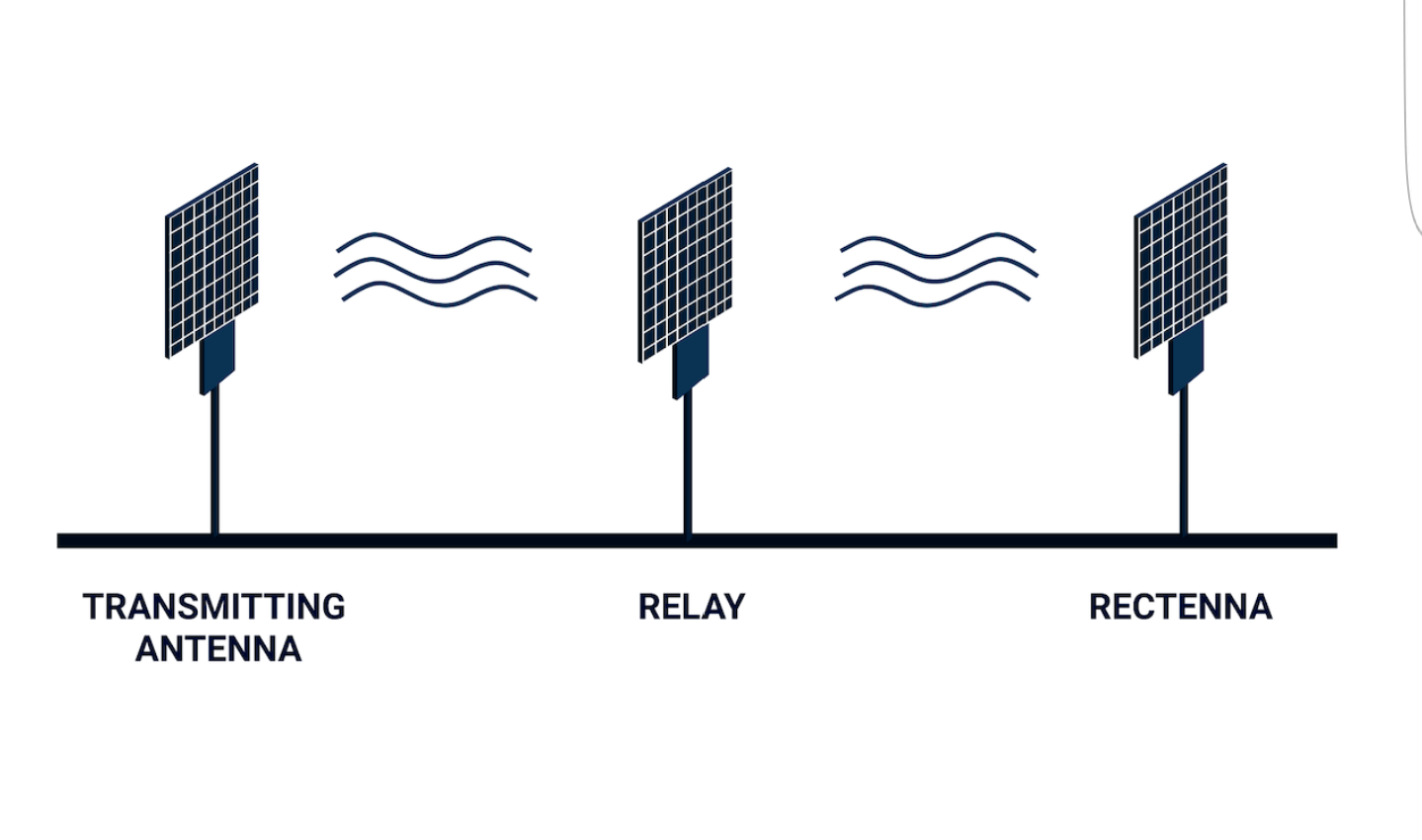Today, a revolution in science has revived Tesla's extraordinary idea, which was once considered a pipe dream and the prospects are incredibly attractive.

Tesla coil
Tesla Coil is an electrical resonant transformer. RF generator for high voltage generation, driving a transformer at low currents. The coil works on the principle of electromagnetic induction: a conductor is placed in a changing magnetic field and generates a voltage across the conductor. Tesla is putting on demonstrations showing how a coil can be used to wirelessly power incandescent bulbs that are several meters apart.

Even by modern standards, Tesla was well ahead of its time. But his ambitions went beyond the Tesla coil prototype. He envisioned a world in which all of humanity could have cheap or even free electricity. He pushed the boundaries when he brought something more functional to life.
The Wardenclyffe Tower was an experimental wireless transmission station built for telecommunications around the world.
However, Tesla's main obsession was wireless transmission of energy. He received funding to build the tower, hiding it as a telecommunications tower. He has already proven that high frequency signals can be transmitted wirelessly using Tesla coil transformers.
Further secret experiments in his laboratory convinced him that he could transmit electricity by using the upper layers of the Earth's atmosphere. The Wardenclyffe Tower was the prototype of what Tesla envisioned as a network of towers spanning the globe and receiving remote wireless access to power from a central station.

Tesla's plan was to generate electricity from a nearby coal mine and send it around the world using a tower, much like radio waves are transmitted wirelessly over long distances. In an interview with The American Magazine, Tesla captured his vision with these vivid words:
“Power can be, and will in the near future, be transmitted wirelessly for all commercial purposes such as lighting homes and controlling airplanes.” I discovered the basic principles and all that remains is to develop them commercially. When this is done, you can go anywhere. point of the world - to the top of a mountain overlooking your farm, the Arctic or the desert - and install a small device that will give you warmth to cook and light to read. "
Unfortunately, Tesla's unbridled ambitions never saw the light of day. The path was closed after J.P. Morgan cut off funding for the project and Tesla went bankrupt. The unfinished tower was demolished in 1917 to fulfill some of Tesla's financial obligations. Until now, the concept of wireless power has been buried under the rubble of bureaucratic, political and financial constraints.
Wireless electricity nowadays
More than 100 years have passed since the collapse of hopes. Several companies are now entering the market with technologies that can safely transmit energy over the air. Emrod , a New Zealand government-backed startup, is leading the race against consumer expectations by being the first in the world to deploy high-power, long-distance wireless transmission of power to replace existing copper wire technology.
This technology uses electromagnetic waves to transmit energy wirelessly over long distances. The energy is converted by the transmitting antenna into electromagnetic radiation, captured by the receiving antenna (rectenna), and then distributed locally using traditional methods. The Emrod system consists of four components: a power supply, a transmit antenna, a transmit relay and a receive rectenna.

Schematic model of the Emrod tele-energy system
First, a transmitting antenna converts electricity into microwave energy and focuses the electricity into a cylindrical beam. The microwave beam is sent through a series of translators until it hits the rectenna, which converts the beam back into electrical energy. Simple, right?
The same thing happens in any radio system, but in a radio the amount of energy that reaches the receiver can be tiny; trapping a few picowatts is all it takes to deliver a clear signal.
On the contrary, it is the amount of clean, wireless energy that is most important. The received share of the transferred energy becomes a key design parameter, therefore it is necessary to develop effective ways to minimize losses.
Emrod found a way to solve this problem. We adopted the ideas of radars and optics. Compared to previous attempts at microwave powered wireless power, Emrod uses metamaterials (in relays) to focus the transmitted radiation more closely.
Power losses during this transmission are minimized. Emrod's CEO says their system operates at 70% efficiency, which is less efficient than copper wires, but in some cases the system is still cost effective. The company plans to improve energy efficiency in the future.
Notably, the technology is reliable as it is not affected by weather or atmospheric conditions, so unexpected power outages will be a thing of the past.
One of the areas of concern is the issue of security. The Emrod electromagnetic beam operates at frequencies classified as ISM - industrial, scientific and medical beams that are harmless to human health.
So far, the startup seeks to deliver energy to communities outside the grid, or transfer energy from sources on the high seas.
Prospects for wireless electricity
It can be argued that wireless electricity is one of those inventions that are not required for us. After all, we are already transmitting electricity, and it works great. But this is far from the case. The hidden costs of traditional power transmission are extremely high.
Power lines are expensive to lay and maintain, not to mention geographic restrictions on the spread of power grids to remote areas. Ships at sea, electric vehicles or airplanes can refuel while on the move. Emrod's approach would solve the range problem, especially for proposed commercial electricity tariffs.
But perhaps the biggest revolution will be the worldwide shift to clean, cheap, renewable energy. You can grasp the scale using two facts.
1. Remote transmission of solar energy
According to global energy statistics , the total energy consumption in the world in 2019 was 13 billion tons of oil equivalent (MTOE). In other words, this is 17.3 terawatts of power.
Today, if we cover a 350 km by 350 km plot of land with solar panels, this can give more than 17.4 TW of power. The area mentioned is about 43,000 square miles. The Great Sahara is about 3.6 million square miles and more than 12 hours of daylight hours, which means energy.
This means that 1.2% of the desert is sufficient to meet the world's energy needs. And neither nuclear fusion nor any other energy source currently under development can compete with that.
What if wireless electricity becomes a reality, we use a small part of the Sahara to collect solar energy and transmit it around the world without the need for expensive copper wires? Will this not be a major breakthrough in solving the problems of the energy crisis, environmental pollution and climate change?
2. Space solar energy
Giant solar cells collecting solar energy in space and transmitting it back to Earth looks like a crazy sci-fi movie scene.
Conceptually developed by Russian scientist Konstantin Tsiolkovsky in the 1920s, the idea of space solar energy has remained largely elusive. But everything is changing. A few months ago, the European Space Agency announced its plan to fund space solar energy as a means of tackling climate change by promoting green energy production.
A space-based solar power system will provide clean energy to everyone, everywhere.
Space solar power will use the concept of wireless electricity. The plan is to convert electricity from solar panels into energy waves and use the electromagnetic field to transmit it down to an antenna on the Earth's surface. The antenna then converts the waves back to electricity.
Thanks to several advantages, CSP is an attractive solution to the impending energy crisis, which will generate more energy:
- It's always sunny noon in space. Terrestrial solar panels are limited by daylight and weather conditions.
- Solar panels can receive more intense sunlight due to the absence of obstructions from atmospheric gases, clouds, dust and other weather conditions. The Earth's atmosphere usually absorbs and reflects back some of the sunlight.
- The solar-powered satellite can be illuminated around the clock, seven days a week. Today, solar energy is harvested for an average of 29% of the day.
- Food can quickly be redirected to the areas that need it the most.
Needless to say, CSE still faces numerous hurdles, the biggest of which is the cost of launching and deploying huge solar panels. New manufacturing methods are currently being explored, such as 3D printing ultra-light solar cells.
Wireless electricity: Tesla's dream and our future reality
By harnessing the enormous potential of wireless electricity, our generation has much to gain and nothing to lose. In the years to come, we can only hope that the current efforts to realize this epic feat will yield positive results. Unfortunately, Nikola Tesla, the great inventor, is not with us so that he can see his dream come true. I'm happy to share one of Tesla's famous quotes, a great source of inspiration for budding scientists around the world:
"If you want to uncover the secrets of the universe, think of it in terms of energy, frequency and vibration."

Other professions and courses